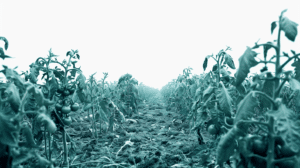Cocoa, cherished for its rich flavor and linked with comfort, is a key component in chocolate, a beloved treat worldwide. Its versatility and potential health benefits have cemented its role in global cuisine. Despite its widespread use, recent market shifts, notably soaring prices, have raised industry concerns, highlighting underlying challenges.
Based on the global cocoa market report, the demand has been forecasted to grow by more than 7% per annum between the years 2019 and 2025. Smallholder farmers have been recognized as being responsible for 70% of global cocoa produce and approximately five million rural households rely on cocoa production as a cash crop, which represents between 60% and 90% of their household incomes.
Recent regulatory shifts, notably impending regulations from the European Union Directive on Regulation (EUDR), have placed additional strain on the cocoa supply chain. These impending changes impose stricter standards on sustainability and environmental practices, adding pressure on producers and traders to comply.
Recently, the cocoa market has experienced an unprecedented surge in prices, driven by a convergence of factors, most notably adverse weather conditions in key cocoa-producing regions, compounded by the disruptive influence of El Niño on West African harvests. The impact of El Niño has been particularly pronounced in regions like Ivory Coast and Ghana, which collectively account for approximately 60% of the world’s cocoa production. This weather phenomenon has disrupted traditional rainfall patterns, leading to hot, dry conditions that have hampered cocoa cultivation and contributed to a significant decline in crop yields.
Reports from market analysts indicate a sharp escalation in cocoa prices, with New York cocoa prices reflecting an astounding increase of over 40% since the beginning of the year. Similarly, London cocoa futures have witnessed an unprecedented surge, more than doubling in value compared to the previous year. These staggering price hikes have sent shockwaves throughout the industry, prompting concerns about the sustainability of cocoa supply chains and the long-term implications for both producers and consumers alike.
Climate change-induced disruptions have further exacerbated the challenges facing cocoa growers, exacerbating existing vulnerabilities within the supply chain. Rising temperatures, shifting precipitation patterns, and increased incidence of extreme weather events have intensified the risk landscape for cocoa cultivation, making crops more susceptible to disease outbreaks and yield fluctuations. In addition to the adverse impact of El Niño, cocoa growers are contending with the proliferation of plant diseases, further undermining production efforts and exacerbating the global supply shortfall.
The surge in cocoa prices has reverberated throughout the industry, affecting stakeholders at every level, including cocoa traders. Traders are navigating volatile markets, anticipating wider deficits and managing the uncertainty surrounding future supply. As demand outpaces supply, traders face the challenge of securing sufficient quantities to meet contractual obligations, further intensifying market dynamics.
For food and beverage companies, the soaring cocoa prices present significant challenges. Companies like Hershey are already feeling the strain, with projections of limited earnings growth due to historic cocoa prices. Consumer demand is anticipated to weaken as higher commodity prices necessitate price adjustments, potentially impacting sales volumes and profitability.
In light of these challenges, food and beverage companies must adopt proactive measures to mitigate risks associated with soaring cocoa prices. Strategies may include diversifying sourcing channels, investing in sustainable practices to enhance resilience, and exploring innovative pricing models to manage cost fluctuations. Additionally, fostering closer partnerships with suppliers and leveraging technology for supply chain visibility can enhance agility and responsiveness to market dynamics.








